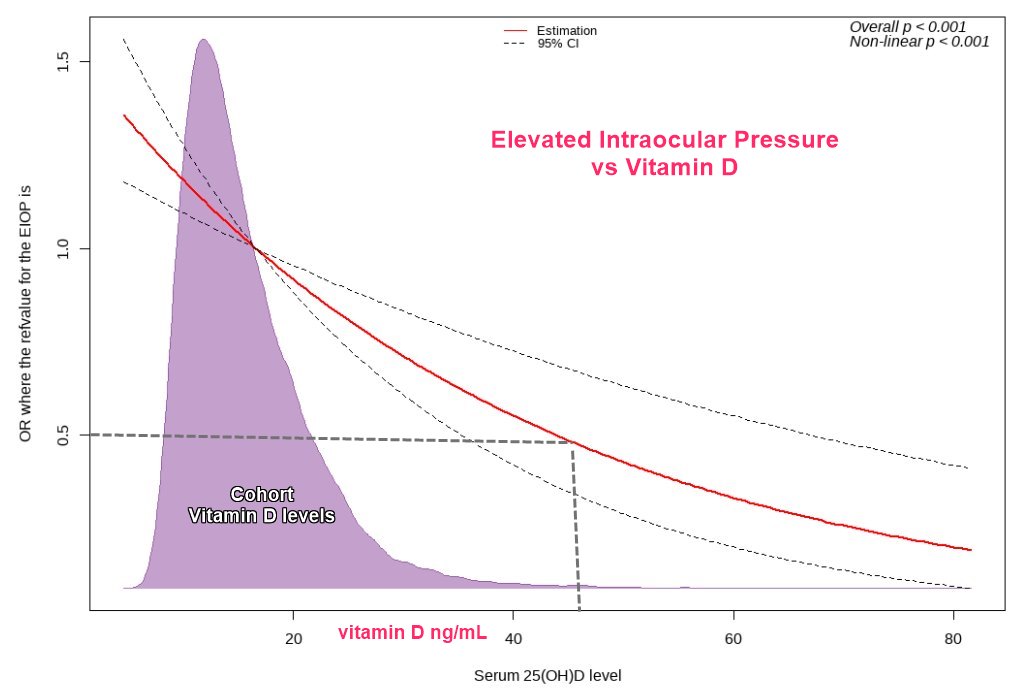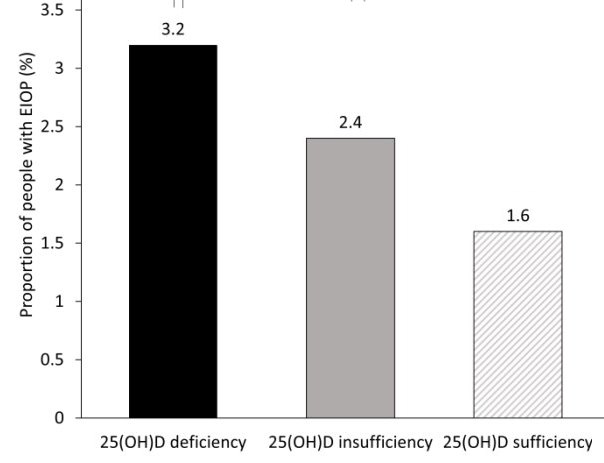Elevated Intraocular Pressure (leads to glaucoma) risk cut in half with lots of vitamin D
Inverse Relationship between Serum 25-Hydroxyvitamin D and Elevated Intraocular Pressure
Nutrients. 2023 Jan 13;15(2):423. doi: 10.3390/nu15020423.
Jun-Hyuk Lee 1 2, Yu-Jin Kwon 3, Hye Sun Lee 4, Jee Hye Han 1, Boyoung Joung 5, Sung Jin Kim 6


Elevated intraocular pressure (EIOP) is the only major modifiable risk factor of glaucoma . While low serum vitamin D levels are considered a potential risk factor for glaucoma, there is conflicting evidence on the relationship between vitamin D and EIOP despite the possible linkage between vitamin D and intraocular pressure through oxidative stress and systemic inflammation. Therefore, the aim of this study is to verify the relationship between 25-hydroxyvitamin D [25(OH)D] and EIOP using data from 15,338 individuals who visited the health promotion center of an education hospital. The cubic spline curve revealed an inverse dose-dependent association between serum 25(OH)D level and EIOP. Using multiple logistic regression analysis, the fully adjusted odds ratio (OR) with 95% confidence interval (CI) for the EIOP of the serum 25(OH)D per increment was 0.97 (0.96-0.990).
The fully adjusted ORs (95% CIs) for the EIOP of the 25(OH)D insufficiency and 25(OH)D sufficiency groups, compared to 25(OH)D deficiency group, were
0.72 (0.56-0.92) and
0.51 (0.34-0.78), respectively.
The relationship remained significant in male and young age subgroups. In conclusion, the clinical assessment of intraocular pressure may prove helpful when treating patients with 25(OH)D deficiency, which may be a preventive strategy against the development of glaucoma.
📄 Download the PDF from VitaminDWiki
7+ VitaminDWiki pages with GLAUCOMA in title
This list is automatically updated
{LIST()}
VitaminDWiki – Vision category contains
{include}
